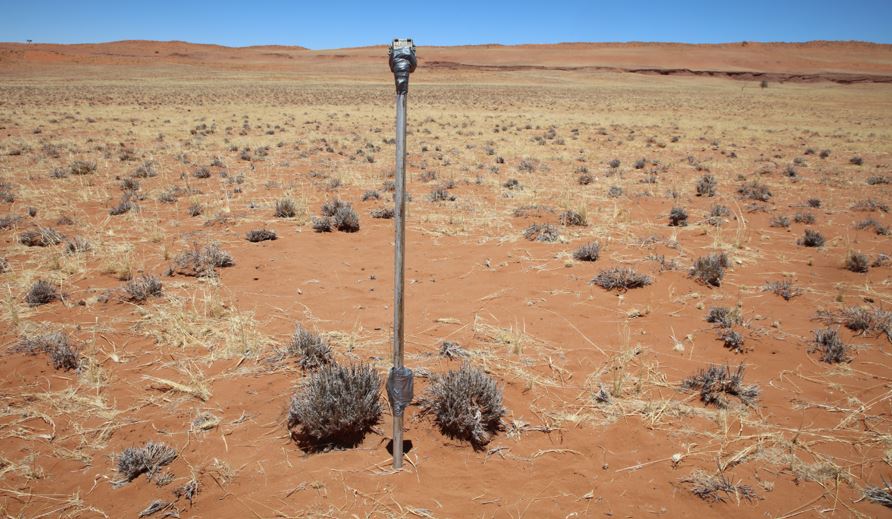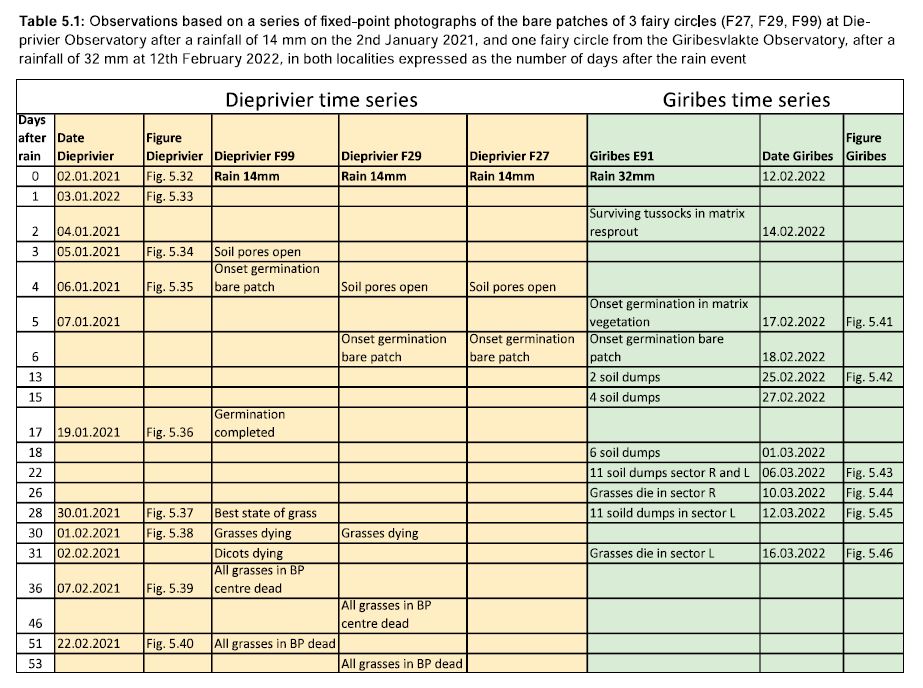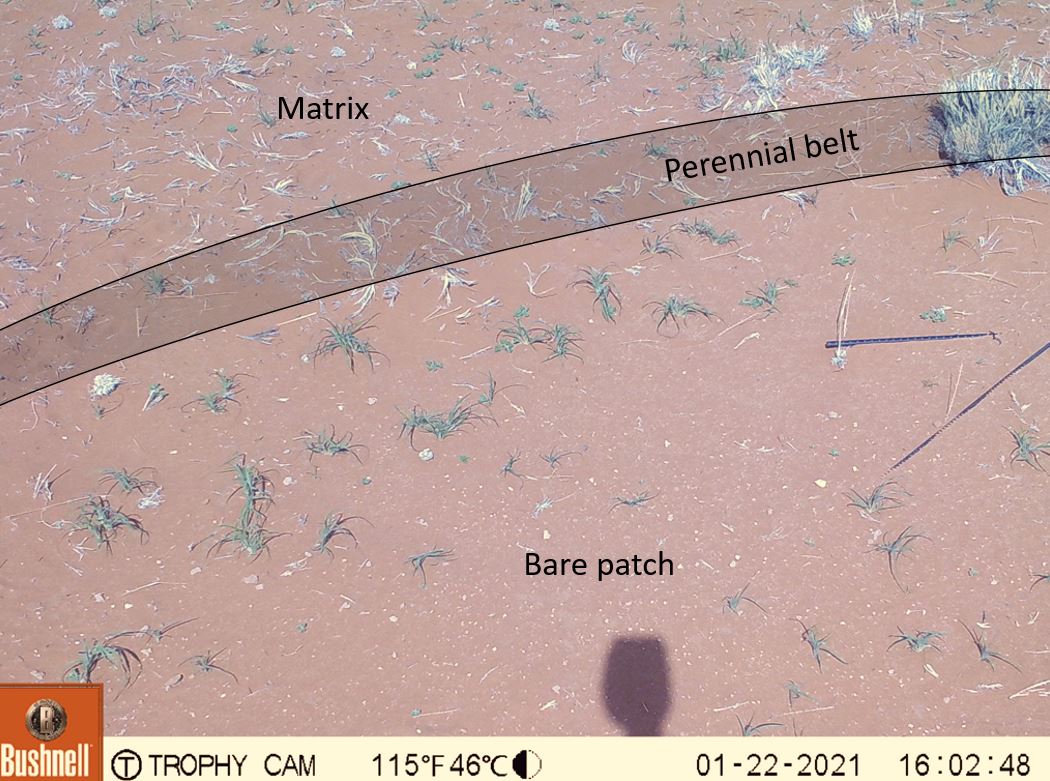 |
|
Data availibilty
Dieprivier
The list below shows which other data is available for this observatory.
 |
 Dieprivier (A01) - Webcam images and video Dieprivier (A01) - Webcam images and video
Video reviews, as known from football matches, provide a direct insight into the development of fairy circles, without travelling to the Namib Desert. Therefore, webcams were installed in various locations to record photos of fairy circles once every day at about noontime and again around 16h. When all of these individual shots are combined, the resulting time lapse video provides clarity as regards the state of vegetation and tracks of animals in and around the fairy circles, over time, after a rainfall. The videos and additional information can be downloaded as files, further below. Two of the three videos were recorded in a year after a severe drought, when there were no surviving old grass plants, around the fairy circles. These videos disprove the incorrect hypothesis that surrounding older grass plants and their roots could resproute and cause the bare fairy circles by drawing soil water towards them.
Video proof 1 shows the grass germination and dieback process of grasses in the Fairy Circle F99 at the Dieprivier Observatory triggered by a rain of 14mm at 2 January 2021. A severe drought in 2019 and 2020 killed all grasses in the landscape. In early 2021 there were no surviving old grass plants around the fairy circle which could take up water with their roots, as is assumed by the self-regulation hypothesis, see attached photo. The four remnants of dead grass tussocks on top at left hand side are part of the former perennial belt (luxury belt) that had been surrounding the fairy circle in 2018 and 2019. Most of the shown area represents the bare patch of the fairy circle.
As the video shows there is good germination of grass plants and a few non-grass species inside the prospective bare patch, starting 6 January. Starting at 1 February the grasses in the centre die (see attached time table). Subsequently the dieback process moves outwards until end of February all grasses in the bare patch are dead. Obviously, there is a force hidden in the soil beneath the bare patch that kills the grasses, starting at the centre, which is the area with the highest soil moisture.
Video proof 2 shows the germination and dieback process of grasses in the Fairy Circle F29 at the Dieprivier Observatory triggered by a rain of 14mm at 2 January 2021. A severe drought in 2019 and 2020 killed all grasses in the landscape. There were no surviving old grass plants around the fairy circle which could take up water with their roots, as is assumed by the self-regulation hypothesis, see attached photo. The remnants of dead grass tussocks on top, best visible on right hand side are part of the former perennial belt (luxury belt) that had been surrounding the fairy circle in 2018 and 2019. Most of the shown area represents the bare patch of the fairy circle. The two metal rods on top at right hand side protect the moisture sensor system from Oryx and Hyena who sometimes destroyed the cables and the loggers.
Also this video shows that there is good germination of grass plants and a few non-grass species inside the prospective bare patch. Starting at 1 February the grasses in the centre die (see attached time table). Subsequently the dieback process moves outwards until end of February all grasses in the bare patch are dead. Obviously, there is a force hidden in the soil beneath the bare patch that kills the grasses, starting at the centre, which is the area with the highest soil moisture.
Compare also Video proof No. 3, shown at the Giribesvlakte Observatory In that video the below ground tunnel system of the sand termites is indicated by little sand dumps which are ejected when the termites clean their tunnels, in the early morning hours. The grasses in the vicinity die a few days after appearance of the sand dumps.
All this information is also presented in a book on fairy circles, shown in the Fairy circle book.
|



 Angola
Angola Bicuar National Park
Bicuar National Park Namibia
Namibia Aussinanis
Aussinanis South Africa
South Africa Alpha
Alpha Zambia
Zambia Dongwe
Dongwe










